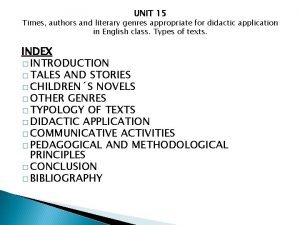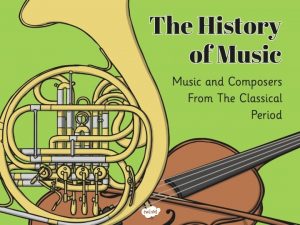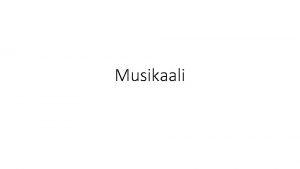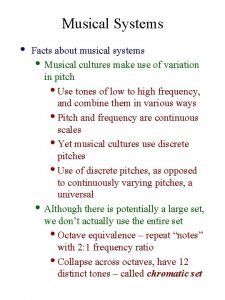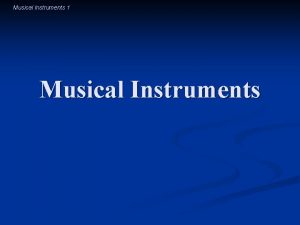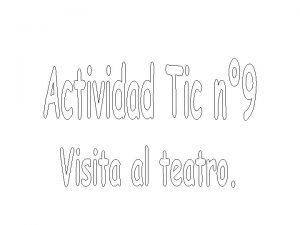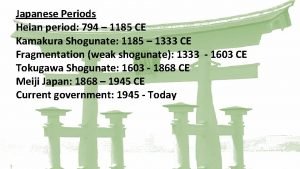National 5 Musical Periods a summary Musical Periods






- Slides: 6

National 5 Musical Periods: a summary

Musical Periods �In this course, we study music written from around 1600 up to the present day. �This covers four main periods of music: Baroque, Classical, Romantic and Modern (also known as 20 th Century). �You will learn how to tell which period a piece of music comes from by listening to it.

Baroque Vivaldi: “Domini Fili” from Gloria. � 1600 -1750 �Baroque music, art and architecture had a strong emphasis on ornamentation and decoration. �Harpsichord: a keyboard instrument which preceded the piano. Strings were plucked rather than struck with hammers. �Composers include Bach, Handel, Monteverdi, Vivaldi and Purcell. �Small orchestra – mostly strings and some woodwind. No percussion. Brass instruments existed: horns without valves.

Classical Mozart: Eine Kleine Nachtmusik • Although the term “classical” is often used to describe all music that is not recent, “Classical” refers specifically to the period around 17501810. • Composers included Mozart, Haydn and Beethoven. • Lots of new instruments: piano, clarinet, more brass, timpani. • Harpsichord no longer used. • Melodies created from scales and broken chords.

Romantic Berlioz: Symphony Fantastique � 1810 -1910 �Romanticism occurred in art, literature, music and theatre. �Classical styles continued into the Romantic period but the composers began to break some of the rules and become more free in their writing, exploring new harmonies, rhythms and styles. �Music is very expressive and can evoke lots of emotions. �Rubato – pushing and pulling the tempo to add expression. �New instruments were at the high and low ends of pitch range – piccolo, contrabassoon, tuba etc. This wider range of notes allowed more moods to be explored. The

Debussy: Cathedral Englouti Modern Penderecki: Threnody to the victims of Hiroshima �Modern music is also called 20 th Century music, even though it continues to be written today! �Composers in the 20 th Century pushed the boundaries of what was musically acceptable. �Music became much stranger sounding; new ways of writing and performing were introduced. �Music could be atonal – in no key.




